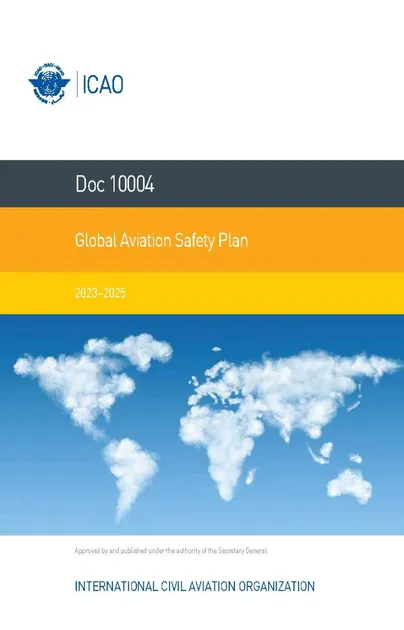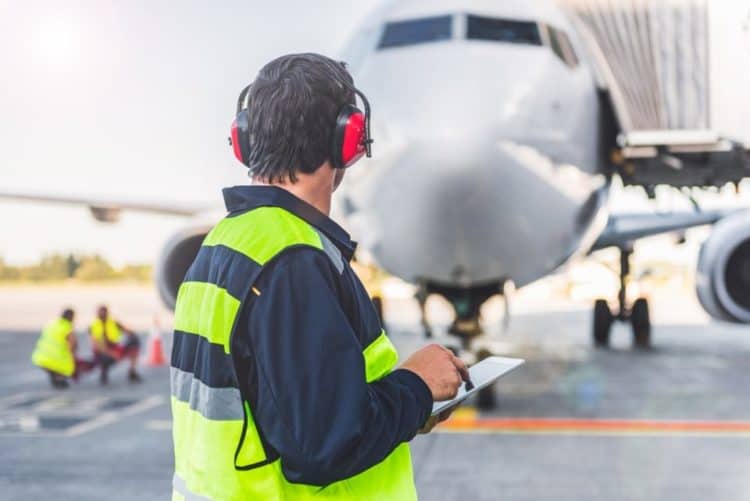Safety is a top priority in aviation and one of ICAO’s core strategic objectives. Because of international cooperation by governments and industry groups, with the support of ICAO, commercial aircraft are the safest way to travel. To support Member States and the industry, ICAO has laid out a comprehensive strategy known as the Global Aviation Safety Plan (GASP). GASP presents the global strategy for the continuous improvement of aviation safety.
 To better explain what the GASP is…
To better explain what the GASP is…
The GASP (ICAO Doc 10004) promotes the effective implementation of a State Safety Programme (SSP), including a State’s safety oversight system, a risk-based approach to managing safety, and a coordinated approach to collaboration between States, regions, and industry. The document enables these stakeholders to adopt a flexible, step-by-step approach for the development and implementation of regional and national aviation safety plans (RASP and NASP) and related safety enhancement initiatives (SEIs) aimed at improving safety.
The GASP further assists States in strengthening their capabilities in the management of safety through a structured process founded on the critical elements (CEs) of a State safety oversight system and the implementation of an SSP. The GASP is a means for States to achieve compliance with safety-related Standards and Recommended Practices (SARPs) and to go beyond the minimum level of compliance by proactively enhancing safety by managing organizational challenges, operational safety risks and emerging issues. The GASP assists States in identifying hazards, safety deficiencies and actions.
Purpose of the GASP
Safety is the highest priority of ICAO’s Strategic Objectives. The GASP aims to reduce fatalities and the risk of fatalities associated with accidents by guiding the harmonized development and implementation of RASPs and NASPs. This endeavor contributes to the economic development of States and their industries by establishing a safe, resilient, and sustainable aviation system.
To advance global civil aviation safety, the GASP adheres to the following values:
- Promoting a positive safety culture.
- Recognizing and promoting the aviation sector’s responsibility for the safety of the public.
- Encouraging collaboration, teamwork, and shared learning in the management of safety.
- Protecting safety data and safety information.
- Promoting the sharing and exchange of safety information.
- Taking data-driven decisions.
- Prioritizing actions to address operational safety risks and organizational challenges through a risk-based approach.
- Allocating resources to identify and analyze hazards and address their consequences or outcomes through a risk-based approach; and
- Managing emerging issues.
Recognizing the dynamic nature of the aviation landscape, ICAO continues to evolve the GASP to ensure its sustained effectiveness and efficiency in the changing regulatory, economic, and technical environments. The 2023-2025 edition of the GASP retains some fundamental elements from the previous edition, such as the six goals and the global high-risk categories of occurrences (G-HRCs). The latest edition includes new and revised targets and amendments based on feedback received, mainly as part of the High-level Conference on COVID-19.
This edition also tackles the challenges posed by global aviation disruptions events on aviation safety and the need for resilience. Disruption events are not covered in-depth in the GASP due to their rapidly changing nature and the preset GASP update cycle, which happens once every three years.
A vision for zero fatalities
Central to GASP’s vision and United Nations 2030 Agenda for Sustainable Development, is to achieve and maintain the aspirational safety goal of zero fatalities in commercial operations by 2030 and beyond. By providing a framework for States, regions and industry, the GASP aims to enhance international aviation safety performance and resilience by:
- Achieving a continuous reduction of operational safety risks
- Strengthening States’ safety oversight capabilities;
- Promoting the implementation of effective SSPs;
- Increasing collaboration at the regional level to enhance safety;
- Expanding the use of industry programmes and safety information sharing networks; and
- Ensuring appropriate infrastructure is available to support safe operations.
The global aviation safety roadmap
To mitigate the risk of fatalities, States, regions, and industry need to address the G-HRCs. These could include controlled flight into terrain, loss of control in-flight, mid-air collision, runway excursion, and runway incursion. These G-HRCs, and specific SEIs to address them, are outlined in the global aviation safety roadmap. The global aviation safety roadmap serves as an action plan to assist the aviation community in the development and implementation of RASPs and NASPs.
Each SEI comprises a set of actions that stakeholders may use to develop and implement a specific action plan. States and regions, in collaboration with industry, should use the roadmap to feed or complement, as applicable, national, and regional safety management activities and develop specific SEIs to support the strategy presented in their RASPs and NASPs. The global aviation safety roadmap enhances coordination and reduces inconsistencies and duplication of effort.
It takes collaboration
The GASP enables collaboration, recognizing that aviation safety is a shared responsibility involving States, regions, and industry stakeholders. It ensures consistent efforts and reduces inconsistencies and duplications by providing a structured approach to safety planning. The plan offers a safety strategy and serves as a guide for action plans that support its implementation.
The GASP strives to achieve the ambitious vision of zero fatalities in commercial aviation by emphasizing risk management and encouraging ongoing improvements. As the aviation industry continues to evolve, GASP evolves with it.



